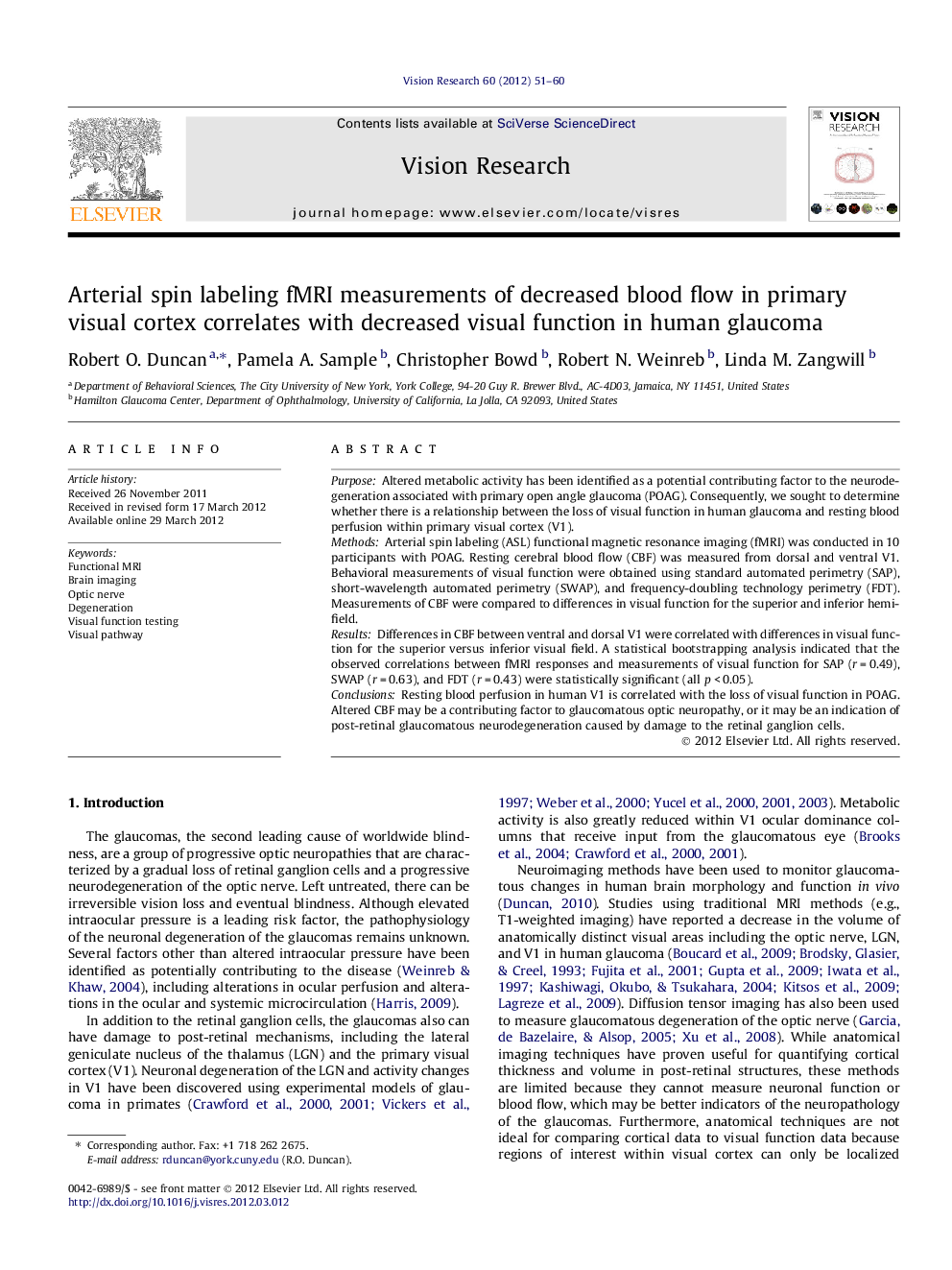| Article ID | Journal | Published Year | Pages | File Type |
|---|---|---|---|---|
| 4033961 | Vision Research | 2012 | 10 Pages |
PurposeAltered metabolic activity has been identified as a potential contributing factor to the neurodegeneration associated with primary open angle glaucoma (POAG). Consequently, we sought to determine whether there is a relationship between the loss of visual function in human glaucoma and resting blood perfusion within primary visual cortex (V1).MethodsArterial spin labeling (ASL) functional magnetic resonance imaging (fMRI) was conducted in 10 participants with POAG. Resting cerebral blood flow (CBF) was measured from dorsal and ventral V1. Behavioral measurements of visual function were obtained using standard automated perimetry (SAP), short-wavelength automated perimetry (SWAP), and frequency-doubling technology perimetry (FDT). Measurements of CBF were compared to differences in visual function for the superior and inferior hemifield.ResultsDifferences in CBF between ventral and dorsal V1 were correlated with differences in visual function for the superior versus inferior visual field. A statistical bootstrapping analysis indicated that the observed correlations between fMRI responses and measurements of visual function for SAP (r = 0.49), SWAP (r = 0.63), and FDT (r = 0.43) were statistically significant (all p < 0.05).ConclusionsResting blood perfusion in human V1 is correlated with the loss of visual function in POAG. Altered CBF may be a contributing factor to glaucomatous optic neuropathy, or it may be an indication of post-retinal glaucomatous neurodegeneration caused by damage to the retinal ganglion cells.
► Arterial spin labeling was conducted in 10 participants with glaucoma. ► Visual function was compared to measurements of cerebral blood flow. ► Resting blood flow is correlated with the loss of visual function in glaucoma. ► Altered cerebral blood flow may contribute to glaucomatous optic neuropathy.
